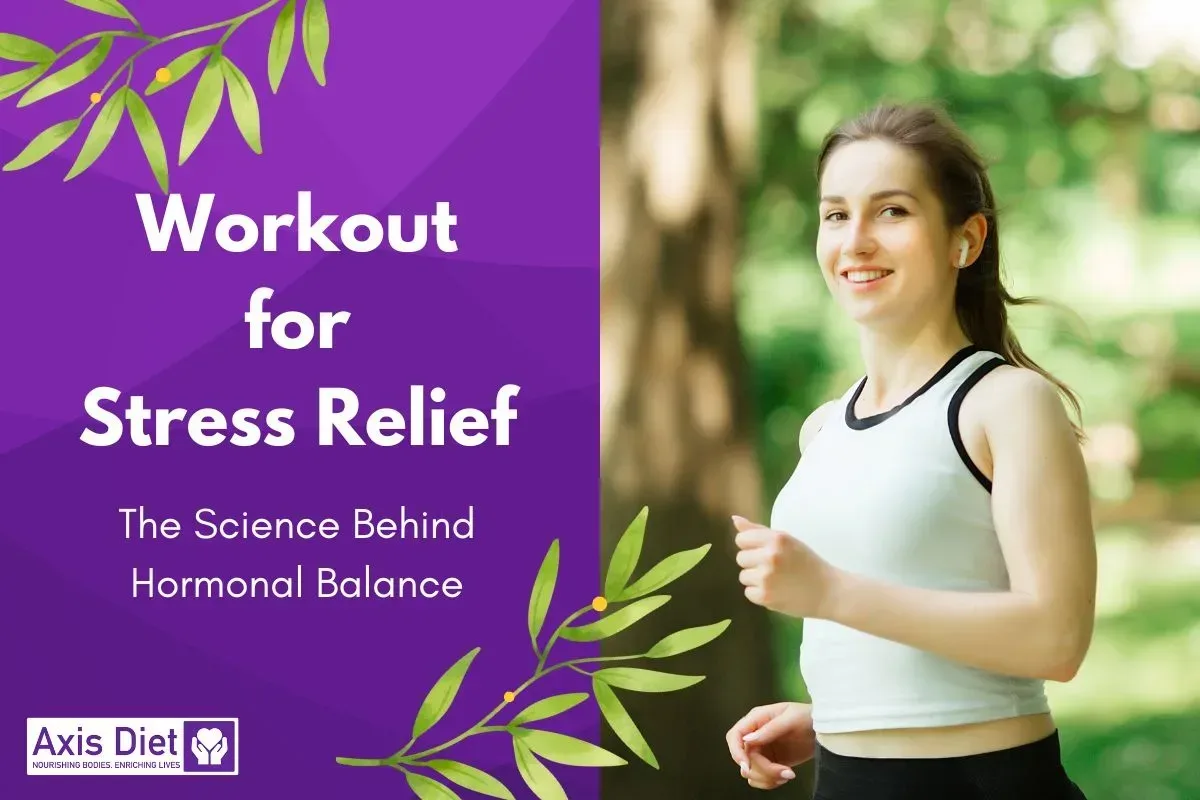Life’s rich tapestry is often tinged with the shades of stress and anxiety, challenges that demand effective counter-strategies. The timeless solution that seamlessly merges tradition and contemporary science? Exercise. At Axis Diet, our mission is to delve deep, presenting you with the science and methods that make exercise not just a physical endeavor but also a rejuvenating balm for the soul.
Workout & Hormonal Balance
Exercise’s mood-boosting properties aren’t just about breaking a sweat; they’re intricately tied to a cascade of hormonal changes. Understanding these biochemical nuances lays the foundation for appreciating the profound emotional impact of physical activity:
Endorphins
Often referred to as the brain’s ‘feel-good’ peptides, endorphins play a crucial role in mitigating pain and inducing feelings of pleasure. During strenuous activities, our body tends to produce higher levels of endorphins as a natural response to cope with the physical stress, resulting in the much-lauded “runner’s high”. This surge doesn’t just provide relief from the discomfort of a demanding workout but also engenders an overarching sense of well-being, comparable to the effects of opioid drugs like morphine, albeit without the associated adverse side effects.
Cortisol
A double-edged sword, cortisol is fundamental for various physiological processes including metabolism regulation, inflammation reduction, and memory formulation. However, when stress becomes chronic, the ensuing prolonged elevation of cortisol levels can be detrimental, manifesting in symptoms like insomnia, weight gain, and mood swings. Exercise, particularly aerobic activities, can act as a cortisol stabilizer. By raising cortisol levels in the short term (during the exercise) and then reducing its production post-workout, exercise helps maintain a balanced hormonal milieu, ensuring that cortisol’s benefits are harnessed without letting its excesses wreak havoc.
Dopamine
The “reward molecule” of our brain, dopamine is instrumental in pleasure-seeking behaviors, motivation, and the anticipation of reward. Physical activity, especially workouts that challenge our endurance or strength, stimulate dopamine release. This influx enhances the sense of achievement post-exercise, making activities like completing a challenging hike, a long run, or even a rigorous dance class, deeply satisfying. Over time, consistent exercise can improve dopamine sensitivity and receptors in the brain, leading to sustained mood improvements and heightened motivation to remain active.
Serotonin
Another critical neurotransmitter, serotonin regulates various aspects of our mood, sleep cycle, and appetite. Low levels have been linked with conditions like depression and insomnia. Aerobic exercises, such as running, cycling, or swimming, have shown a marked impact on boosting serotonin production. Enhanced serotonin levels not only combat depressive symptoms but also contribute to a better night’s sleep and more balanced appetite, further accentuating the overall mood-lifting benefits of exercise.
Norepinephrine
This chemical messenger functions both as a hormone and neurotransmitter. It’s pivotal in the body’s stress response, enhancing alertness, focus, and the speed of reaction. During exercise, the body’s demand for oxygen-rich blood intensifies, triggering an uptick in norepinephrine levels. This surge sharpens our focus, boosts energy, and aids in quick decision-making. Over the long term, regular workouts can optimize the baseline levels of norepinephrine, ensuring sustained cognitive agility and alertness.
In essence, the relationship between exercise and our internal biochemistry is symbiotic. As we push our bodies, challenging our physical limits, we’re rewarded with a hormonal alchemy that not only supports our physiological well-being but also elevates our emotional and cognitive landscapes.
Simple Workouts for Stress Relief
Aware of the scientific backdrop, we can now venture into the diverse world of workouts, each offering unique mood-enhancing benefits:
1. Yoga: Rooted in the rich tapestry of Indian tradition, yoga is more than just physical postures; it’s a holistic journey of self-discovery and healing. Each asana, or pose, when complemented with pranayama (breath control), instills a profound sense of harmony between the physical and ethereal. As practitioners delve deeper into their practice, they unlock layers of inner stillness, allowing the chaos of the external world to momentarily fade away, and inviting a serenity that transcends the confines of the mat.
2. Running and Walking: There’s something inherently therapeutic about the rhythmic progression of one’s own footsteps, whether they’re racing against the wind or leisurely mapping a trail. Running, with its increased intensity, floods the system with endorphins, the body’s natural mood elevators. Walking, on the other hand, allows for a contemplative pace, where thoughts can meander, offering both mental clarity and a gentle physical exertion. In either case, the open environment becomes a canvas for reflection, making each journey a meditative reprieve from the whirlwind of daily life.
3. Dance: Beyond its physicality, dance is the soul’s language, articulated through graceful movements and impassioned rhythms. Regardless of the genre — be it the exuberance of salsa or the elegance of ballet — dance remains a celebration of life and its myriad emotions. With every twirl, leap, and step, dancers not only enhance their physical agility but also embark on an emotional roller coaster, channeling feelings into motion, and in the process, elevating their mood and spirit.
4. Tai Chi: Originating from ancient Chinese martial arts, Tai Chi is often described as “meditation in motion.” With its series of deliberate, flowing movements, practitioners are encouraged to focus on the present, anchoring their awareness in each transition. The slow, rhythmic sequences cultivate a deep sense of inner peace, improve balance, and offer a gentle yet effective exercise for the body. For many, Tai Chi becomes a sanctuary of tranquility amidst life’s storms.
5. Boxing: At a cursory glance, boxing might appear aggressive, but beneath its combative exterior lies a discipline that demands focus, strategy, and unparalleled mental strength. As boxers spar or punch bags, they’re not just training their bodies but also learning to harness their emotions. The controlled environment provides a space to release pent-up frustrations and tensions, rendering a therapeutic catharsis. Furthermore, mastering the techniques instills a sense of accomplishment and resilience that permeates beyond the ring.
6. Swimming: Immersing oneself in water is akin to returning to a primordial state of being, where the world’s cacophonies are muffled, and one is left with their rhythmic breath and strokes. Swimming challenges every muscle, offering a comprehensive workout while simultaneously granting the mind a respite from overstimulation. The gentle resistance of water combined with its buoyant embrace ensures that swimmers experience a blend of exertion and relaxation, making each lap a journey of holistic rejuvenation.
Beyond the immediate hormonal response, regular exercise fosters improved self-esteem, sleep quality, and cognitive function, all of which are pivotal to maintaining a buoyant mood. Moreover, the very act of committing to a routine and witnessing tangible progress cultivates a sense of accomplishment, further enhancing emotional well-being.
Concluding Perspective
Physical exercise is not a mere act of burning calories or building muscles; it’s a profound journey into self-care, where the rhythms of the body and the harmonies of the mind unite in a symphony of well-being. Armed with knowledge and inspired by science, Axis Diet is here to guide you on this transformative path, where every step, stretch, or swim becomes a testament to holistic health and happiness.






[…] Historically, our evolutionary journey has been one of constant motion. From hunting to migrating, our ancestors were always on the move. This intrinsic need for movement has been hardwired into our DNA. Explore the profound connection between exercise and mood in our article Workout for Stress Relief: The Science Behind Hormonal Balance. […]
[…] Diet, we frequently discuss topics that nourish your body and mind through proper nutrition and lifestyle choices. In this article, we explore why a digital detox should be an essential component of your health […]